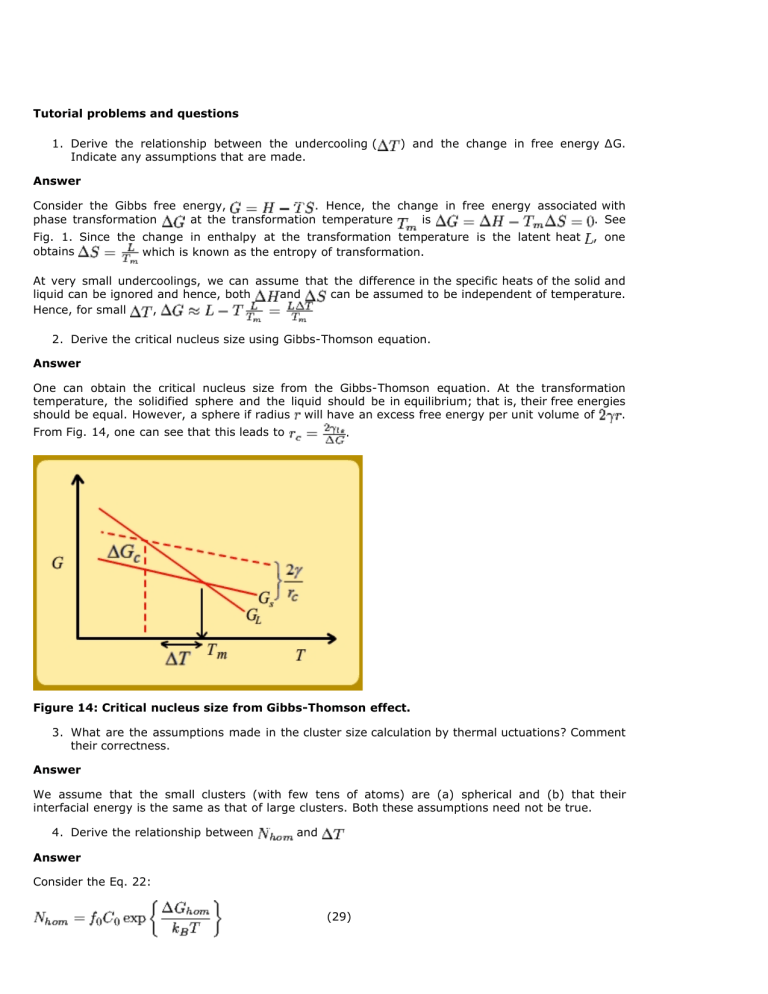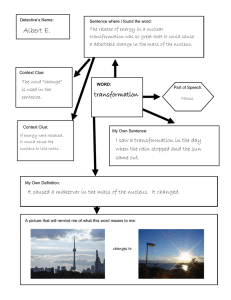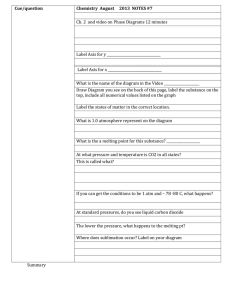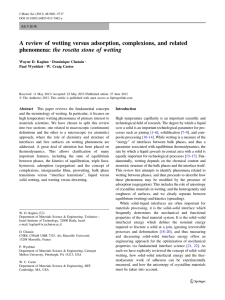Tutorial problems and questions 1. Derive the relationship between

Tutorial problems and questions
1. Derive the relationship between the undercooling (
Indicate any assumptions that are made.
Answer
) and the change in free energy ΔG.
Consider the Gibbs free energy, phase transformation
. Hence, the change in free energy associated with
at the transformation temperature is . See
Fig. 1. Since the change in enthalpy at the transformation temperature is the latent heat , one obtains which is known as the entropy of transformation.
At very small undercoolings, we can assume that the difference in the specific heats of the solid and liquid can be ignored and hence, both and can be assumed to be independent of temperature.
Hence, for small ,
2. Derive the critical nucleus size using Gibbs-Thomson equation.
Answer
One can obtain the critical nucleus size from the Gibbs-Thomson equation. At the transformation temperature, the solidified sphere and the liquid should be in equilibrium; that is, their free energies should be equal. However, a sphere if radius will have an excess free energy per unit volume of .
From Fig. 14, one can see that this leads to .
Figure 14: Critical nucleus size from Gibbs-Thomson effect.
3. What are the assumptions made in the cluster size calculation by thermal uctuations? Comment their correctness.
Answer
We assume that the small clusters (with few tens of atoms) are (a) spherical and (b) that their interfacial energy is the same as that of large clusters. Both these assumptions need not be true.
4. Derive the relationship between and
Answer
Consider the Eq. 22:
(29)
Also, from Eq. 19 we have
(30)
In the above expression, using the result from the rst problem in this tutorial, one can substitute for
the term : hence,
(31)
Hence,
(32) where
(33)
5. While it is possible to undercool a melt below melting temperature without freezing, it is not possible to heat a solid above melting temperature without melting setting in. Why?
Answer
It is generally found that the vapour-solid, liquid-solid, and vapour-liquid free energies are such that
. Hence, the wetting angle is zero, and there is no need for superheating for the nucleation of liquid to take place. Hence, melting starts at the melting temperature when a solid is heated.
6. Calculate the wetting angle for the heterogeneous nucleation of a spherical cap on a at mould wall.
Answer
Consider the Fig. 12. From the figure, it is clear that the interfacial tensions , on the mould wall if . Or,
and balance
(34)
7. Let be the wetting angle. Then, show that
(28)
Answer
Consider
(35)
From Fig. 12, one can show the following:
(36)
(37)
(38)
Hence, it follows that
(39)



